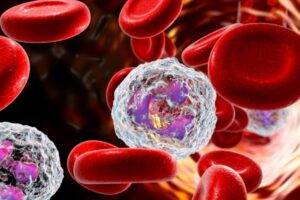When it comes to safeguarding our children’s health, understanding the intricacies of their immune system becomes paramount. Neutropenia, a condition marked by an abnormally low concentration of neutrophils, can make kids vulnerable to infections. I am Dr. Michael Nwaneri, a pediatrician and an obesity medicine specialist, and I’ve put together this comprehensive, authoritative guide to help you decipher the labyrinth that is neutropenia.
What Is Neutropenia? The Foundation of Understanding
Neutropenia is characterized by a lower-than-normal level of neutrophils, a type of white blood cell crucial for combating bacterial and fungal infections. The normal neutrophil count varies depending on age but usually ranges between 1,500 and 8,000 cells per microliter of blood. Neutropenia is generally diagnosed when the count falls below 1,500. 
The Astonishing Causes: Triggers and Risk Factors
- Congenital Conditions: Conditions like Kostmann syndrome where a child is born with neutropenia.
- Chemotherapy or Radiation: Treatments for cancers can cause temporary neutropenia.
- Medications: Certain drugs can lead to drug-induced neutropenia.
- Infections: Some viral or bacterial infections can temporarily lower neutrophil count.
- Bone Marrow Disorders: Such as leukemia or myelodysplastic syndromes.
- Nutritional Deficiencies: Lack of vitamins like B12.
The Unbelievable Symptoms: What To Look Out For
The primary concern with neutropenia is an increased susceptibility to infections, which may manifest as:
- Frequent Illnesses: Colds, fevers, or other infections.
- Poor Healing: Slow recovery from minor cuts or wounds.
- Other Infection Indicators: Such as sore throat, mouth sores, or swollen gums.
Diagnosing the Enigma: Tests and Evaluations
- Complete Blood Count (CBC): The most common diagnostic test.
- Bone Marrow Aspiration: For severe or chronic cases.
- Specific Antibody Tests: To rule out underlying infections or diseases.
Treatment Paradigms: Fighting Back Against Neutropenia
- Antibiotics: Prophylactic antibiotics may be given to prevent infections.
- Granulocyte Colony-Stimulating Factor (G-CSF): Stimulates the bone marrow to produce more neutrophils.
- Nutritional Supplements: Vitamin B12 or folate for deficiencies.
- Treatment of Underlying Cause: Chemotherapy dosage may be adjusted, or offending drugs may be stopped.
Power-Packed Preventive Measures
- Hygiene: Frequent hand-washing and use of sanitizers.
- Dietary Caution: Avoiding raw or undercooked foods.
- Environmental Precautions: Staying away from construction sites or places with high infection risks.

Wrapping Up: Taking Command of Neutropenia
While the term ‘neutropenia’ might strike an ominous chord, armed with the correct information, you’re well-equipped to navigate this health challenge. The primary goal is to manage the condition effectively, minimizing the risk of infections and treating underlying causes where possible.
References
- American Society of Hematology – Neutropenia
- Pediatric Blood & Cancer Journal
- National Institutes of Health (NIH) – Neutropenia
Disclaimer: This guide is solely for educational purposes and should not replace professional medical advice.


